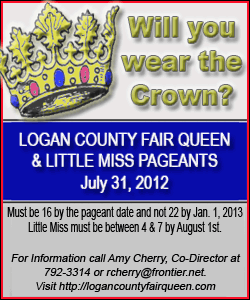| ||||||||||
| ||||||||||
"We don't think nothing about it," he said, adding that he's even played a McCoy a few times. "We just look at it as history and now entertainment." The feud officially ended June 14, 2003, when about 60 descendants of the two families gathered in Pikeville, Ky., to sign a truce during the fourth festival. The bus tours on the West Virginia side used to run only during the festival, but additional tours are planned for June, along with once-a-month tours from July through September because of greater demand, said Natalie Young, executive director of the Tug Valley Chamber of Commerce and the Williamson Convention and Visitors Bureau. The sites feature historical markers that describe the pivotal events. Visitors can see the spot where three McCoys
-- Tolbert, Pharmer and Randolph Jr., all sons of Ole Ran'l McCoy -- were tied to pawpaw trees and shot to death by an unofficial posse organized by Devil Anse Hatfield. He was seeking to avenge the death of his brother, Elliston, at the hands of the McCoys. Many believe the feud was rooted in the Civil War, but the bitterness was perpetuated by disputes over timber rights and even a pig. The tour includes a stop at the site of the trial over the contested swine and at the place where Johnse Hatfield and Roseanna McCoy began their ill-fated love affair. Another stop is at their child's grave. Lisa Alther, author of the book "Blood Feud" about the warring families, said other feuds happened in the Southern Appalachians during that era but none captured the public's imagination like the Hatfields and McCoys, due partly to its web of compelling plot lines. "It's partly a culture of honor, where insults can lead to fights and nobody would step down," she said. "There was too much alcohol for sure, too many guns, possibly too little formal education, so people hadn't learned how to discuss rather than fight."
From an ancestral McCoy home in nearby Kentucky where the family had gathered for the reunion, Elliott McCoy said the hatred and distrust between the families died out long ago. "I don't know anybody that would have a bitter feeling toward them," McCoy, a gospel singer who lives in Nashville, Tenn., said of the Hatfields. "If they did, they wouldn't be in their right mind." Descendants on both sides share a pride in their heritage, though they disavow the violent streak. "It's knowing that you come from a long line of people that didn't make a lot of right decisions at times, but they thought it was right in their mind, so that's what they did," said Michael Maurice Hatfield. "Now I've got a short fuse myself, and I understand where it comes from." ___ Online: Pike County Tourism, Convention & Visitors Bureau:
http://www.tourpikecounty.com/ Tug Valley Chamber of Commerce:

http://www.tugvalleychamber.com/
[Associated
Press;
Copyright 2012 The Associated Press. All rights reserved. This material may not be published, broadcast, rewritten or redistributed.
News | Sports | Business | Rural Review | Teaching & Learning | Home and Family | Tourism | Obituaries
Community |
Perspectives
|
Law & Courts |
Leisure Time
|
Spiritual Life |
Health & Fitness |
Teen Scene
Calendar
|
Letters to the Editor